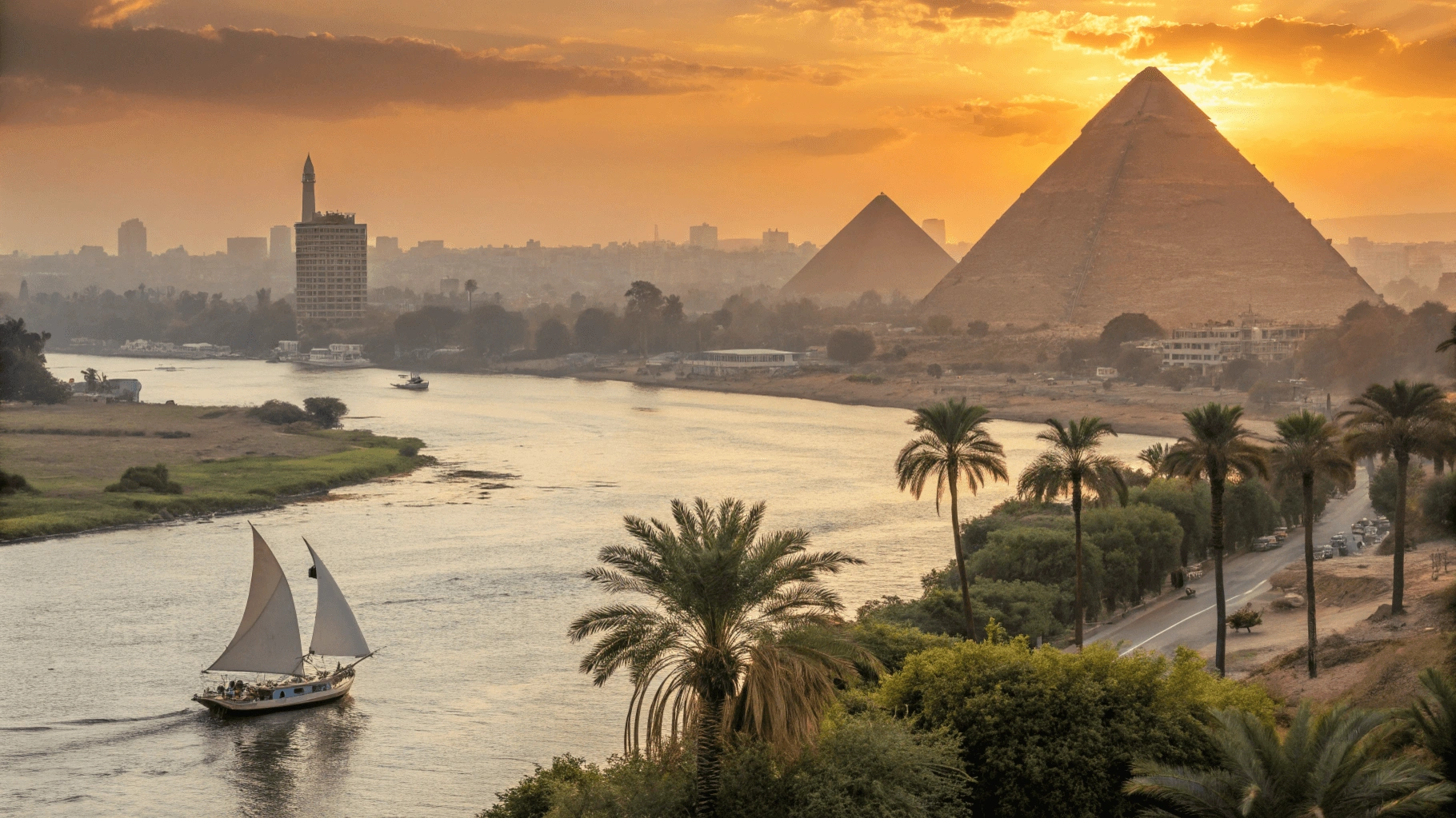Introduction
The land of pharaohs, pyramids, and papyrus holds an eternal mystique that has captivated travelers, historians, and dreamers for millennia. When exploring “Egypt things,” you’ll quickly discover this isn’t merely about checking landmarks off a bucket list—it’s about immersing yourself in one of humanity’s most enduring and influential civilizations.
This comprehensive guide navigates through the multifaceted aspects of Egypt—from must-see landmarks and historical treasures to cultural insights and practical travel tips. Whether you’re planning your first visit, researching for a project, or simply indulging your curiosity about this remarkable country, you’ll find everything you need to understand the breadth and depth of Egypt things worth knowing, seeing, and experiencing.
Table of Contents
Unmissable Things to DO & See
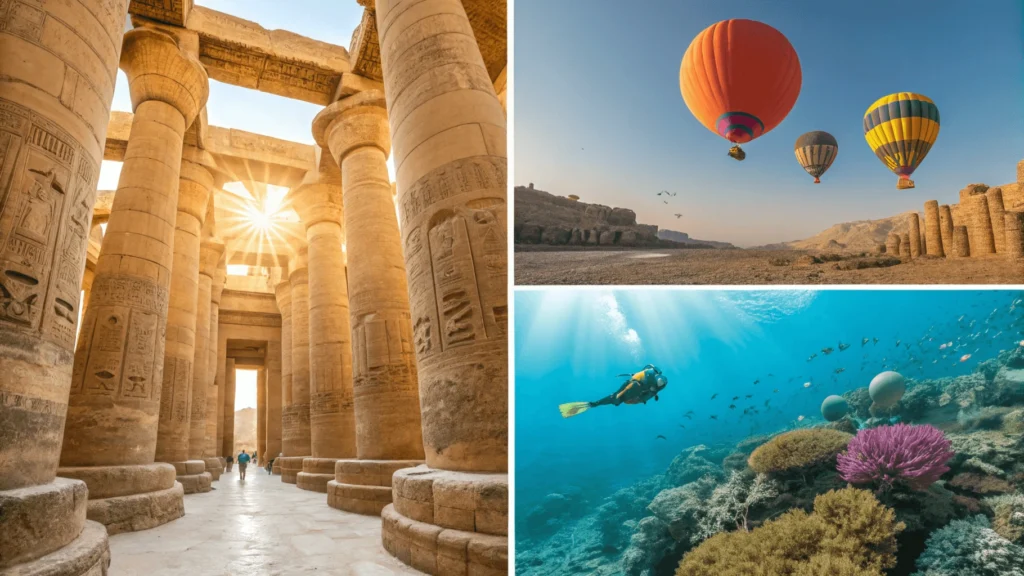
Iconic Landmarks
The Pyramid Complex at Giza
No discussion of Egypt things could begin anywhere but here. The Great Pyramid of Khufu, the last surviving wonder of the ancient world, stands as humanity’s most enduring architectural achievement. Built around 2560 BCE, this mathematical marvel contains approximately 2.3 million stone blocks, each weighing 2.5 to 15 tons.
Visitor Tips:
- Visit early morning (before 8 AM) or late afternoon to avoid both crowds and the intense midday heat
- Consider hiring a knowledgeable guide to explain the historical context
- The interior of the Great Pyramid requires a separate ticket with limited daily availability
- Photography is allowed outside but may be restricted inside the pyramids
Beyond the Great Pyramid: The complex includes two other major pyramids (Khafre and Menkaure), the enigmatic Great Sphinx, and several smaller “queens” pyramids. Plan at least 3-4 hours to properly explore the entire plateau. The Giza pyramid complex, including the Great Pyramid of Khufu, is part of the UNESCO World Heritage Site “Memphis and its Necropolis.
Abu Simbel Temples
Carved into the mountainside during the reign of Ramses II, these massive temples were relocated in their entirety in the 1960s to save them from the rising waters of Lake Nasser. The main temple is oriented so that twice a year (February 22 and October 22), the first rays of morning sun illuminate the inner sanctuary, lighting up three of the four statues—leaving only Ptah, god of darkness, in shadow. The relocation of Abu Simbel was one of the most remarkable feats of archaeological preservation in the 20th century. Read the full story on UNESCO’s official site.
Visitor Experience:
- Most visitors arrive on day trips from Aswan (3-hour drive each way)
- Early morning arrivals provide the best lighting for photography
- The Sound and Light show offers a different perspective after sunset
- Consider staying overnight in the nearby village to experience the temples without day-trip crowds
Karnak Temple Complex
The largest religious building ever constructed, Karnak represents the combined achievement of many generations of ancient craftspeople. Its Hypostyle Hall, featuring 134 massive columns arranged in 16 rows, creates a forest of stone that has inspired awe for thousands of years.
Best Ways to Experience Karnak:
- Morning visits offer the best lighting for the intricate hieroglyphics
- Engage a guide to explain the complex religious symbolism
- Allow at least 2-3 hours to properly explore
- The evening Sound and Light show provides a dramatic historical narrative
Valley of the Kings
For nearly 500 years, this valley served as the burial place for pharaohs including Tutankhamun, Seti I, and Ramses II. With over 60 tombs discovered (and possibly more still hidden), the valley represents one of archaeology’s richest sites.
Tomb Access Tips:
- Standard tickets include entry to three tombs of your choice (excluding special tombs like Tutankhamun’s)
- Tomb openings rotate to help preservation efforts—check current openings
- Photography restrictions vary by tomb and may require additional permits
- Early morning visits avoid both heat and crowds
The Egyptian Museum
Home to the world’s largest collection of Pharaonic antiquities, the Egyptian Museum in Cairo houses over 120,000 items. The museum’s collection is gradually being transferred to the new Grand Egyptian Museum near Giza, scheduled for full opening soon.
Highlights:
- Tutankhamun’s treasures, including his iconic gold mask
- The Royal Mummy Room (separate ticket required)
- Artifacts from daily life spanning 5,000 years of Egyptian civilization
- Statuary from every period of ancient Egyptian history, For current exhibits and information on the Grand Egyptian Museum’s development, visit the official museum site.
Nile Experiences
Luxury Nile Cruises
The traditional way to experience Egypt’s lifeline, Nile cruises typically operate between Luxor and Aswan, ranging from 3 to 7 nights.
| Cruise Type | Price Range | Best For |
|---|---|---|
| Budget | $80-150/night | Basic accommodations, included excursions |
| Mid-range | $150-300/night | Better amenities, quality dining, guided tours |
| Luxury | $300-600+/night | Spacious cabins, gourmet dining, private tours |
What to Expect:
- Daily excursions to riverside temples and archaeological sites
- On-board entertainment featuring local music and culture
- Breathtaking views of rural Egyptian life unchanged for centuries
- All-inclusive packages that simplify travel logistics
Felucca Sailing
For a more authentic experience, consider sailing on a felucca—a traditional wooden sailing boat that has navigated the Nile for thousands of years.
Felucca Options:
- Short sunset cruises (1-2 hours) around Aswan or Luxor
- Multi-day adventures between Aswan and Luxor (basic accommodations on deck)
- Private charters for customized experiences
The Felucca Experience:
- Peaceful sailing powered only by wind
- Simple accommodations (cushions on deck, basic meals)
- Intimate connection with the river and landscape
- Direct cultural exchange with traditional sailors
Major Cities & Regions
Cairo: The Vibrant Capital
Beyond the pyramids, egypt things capital offers a fascinating blend of ancient history and vibrant contemporary culture.
Must-Experience Cairo Things:
- Khan el-Khalili Bazaar: Navigate this 14th-century marketplace’s labyrinthine alleys
- Islamic Cairo: Explore the dense concentration of historic mosques, madrasas, and mansions
- Coptic Cairo: Discover Egypt’s Christian heritage in this historic district
- Al-Azhar Park: Enjoy panoramic city views from this beautifully designed green space
- Local Food Scene: Sample koshari, ful medames, and other Egyptian street food classics
Local Tip: For an unforgettable Cairo experience, enjoy sunset from the Al-Azhar Park followed by dinner at Naguib Mahfouz Café in Khan el-Khalili.
Luxor: The World’s Greatest Open-Air Museum
Ancient Thebes, modern Luxor splits across the Nile—the East Bank houses the living city and temples dedicated to Amun-Ra, while the West Bank serves as the city of the dead.
East Bank Highlights:
- Luxor Temple: Especially magical when illuminated at night
- Karnak Temple: The largest religious complex ever built
- Luxor Museum: Housing exquisitely displayed artifacts
West Bank Treasures:
- Valley of the Kings: Royal tombs filled with vivid hieroglyphics
- Valley of the Queens: Including the exceptional tomb of Nefertari
- Mortuary Temples: Hatshepsut’s, Ramesseum, Medinet Habu
Unique Experience: Hot air balloon rides at dawn offer spectacular views over monuments on both banks.
Aswan: Egypt’s Southernmost City
With a more relaxed atmosphere than Cairo or Luxor, Aswan offers a glimpse into Nubian culture and some of egypt things most beautiful riverscapes.
Aswan Highlights:
- Philae Temple: A Ptolemaic temple dedicated to Isis, rescued from flooding
- Nubian Villages: Colorful communities with distinctive architecture and culture
- Elephantine Island: Archaeological sites and a Nilometer for measuring the river’s height
- Botanical Gardens: Exotic plants from around the world on Kitchener’s Island
Local Experience: Enjoy sunset at the Old Cataract Hotel where Agatha Christie wrote “Death on the Nile.”
Alexandria: Mediterranean Elegance
Founded by Alexander the Great, Alexandria offers a different flavor of Egypt with its Mediterranean ambiance and Greco-Roman heritage.
Alexandria Things Worth Seeing:
- Bibliotheca Alexandrina: Modern tribute to the ancient Library of Alexandria
- Qaitbay Citadel: 15th-century fortress built on the site of the ancient Lighthouse
- Montazah Palace Gardens: Royal gardens perfect for leisurely strolls
- Roman Amphitheater: Well-preserved archaeological site in the heart of the city
- Alexandria National Museum: Housed in a restored palace
Culinary Tip: Alexandria offers egypt things finest seafood—visit the harborside restaurants for the freshest catch.
Red Sea Riviera
Egypt’s eastern coastline offers world-class diving, snorkeling, and beach resorts.
Key Destinations:
- Sharm El-Sheikh: Luxury resorts and vibrant nightlife
- Hurghada: Family-friendly beaches and water sports
- Dahab: Laid-back atmosphere popular with independent travelers
- Marsa Alam: Emerging destination with pristine diving sites
Unmissable Experience: Dive or snorkel at Ras Mohammed National Park to explore some of the world’s most biodiverse coral reefs.
Off-the-Beaten-Path Gems
Siwa Oasis
This remote oasis near the Libyan border offers a glimpse into traditional Berber culture, surrounded by date palms and freshwater springs.
Siwa Highlights:
- Shali Fortress: Ancient mud-brick city center
- Oracle Temple: Where Alexander the Great was reportedly declared divine
- Cleopatra’s Bath: Natural spring pool surrounded by palms
- Desert Safaris: Explore the Great Sand Sea with local guides
White Desert National Park
Surreal chalk formations create an almost lunar landscape in this unique desert region southwest of Cairo.
Visitor Experience:
- Camping among the bizarre rock formations
- Stargazing in one of egypt things most remote regions
- Photography opportunities unlike anywhere else in the country
- 4×4 expeditions through varied desert terrain
Monastery of St. Catherine
Located at the foot of Mount Sinai, this UNESCO World Heritage site houses one of the world’s oldest continuously operating libraries, with manuscripts second only to the Vatican.
Worth Noting:
- The monastery contains the Burning Bush of biblical fame
- Climb Mount Sinai for sunrise (2-3 hour hike in darkness)
- View ancient icons and religious artifacts in the monastery museum
- Visit the oldest working library in Christianity
The Temple of Hathor at Dendera
One of egypt things best-preserved temple complexes features stunning ceiling astronomical scenes and vibrant colors that have survived the centuries.
Visitor Tips:
- Located just north of Luxor, easily visited as a day trip
- The recently cleaned ceiling in the hypostyle hall reveals vivid original colors
- The roof offers access to unique architectural elements rarely seen elsewhere
- The zodiac ceiling (original now in the Louvre) shows Egyptian astronomical knowledge
Activity Types
Diving & Snorkeling
The Red Sea offers some of the world’s best underwater experiences with crystal clear waters, vibrant coral reefs, and abundant marine life.
Top Diving Sites:
- SS Thistlegorm: WWII shipwreck consistently ranked among the world’s best dive sites
- Blue Hole (Dahab): Challenging dive for experienced divers only
- Ras Mohammed National Park: Extraordinary biodiversity and coral formations
- Dolphin House Reef: Opportunities to swim with wild dolphins
For Beginners: Many resorts offer “Discover Scuba” experiences and certification courses.
Hot Air Ballooning
Floating over the ancient monuments of Luxor at dawn provides a perspective few experiences can match.
What to Expect:
- Early morning wake-up (typically 4-5 AM)
- Flight duration of approximately 45 minutes to 1 hour
- Aerial views of temples, valleys, and the contrast between green fields and desert
- Celebration certificate upon landing
Safety Note: Choose only officially licensed operators with proper safety certification.
Shopping Experiences
From ancient crafts to modern souvenirs, shopping in egypt things offers something for every taste and budget.
What to Buy:
- Papyrus: Hand-painted scenes from Egyptian mythology
- Alabaster: Traditional stone carving, especially in Luxor
- Carpets: Hand-knotted rugs from various regions
- Spices: Vibrant colors and aromas from local markets
- Gold and Silver: Cartouches and reproductions of ancient jewelry
Shopping Tips:
- Bargaining is expected in markets and most shops
- Be prepared to walk away to get the best price
- Quality varies widely—inspect items carefully
Culinary Tours
Egyptian cuisine represents one of the Middle East’s oldest food traditions, blending flavors from the Mediterranean, Africa, and the Levant.
Food Experiences:
- Street Food Tours: Sample koshari, ta’ameya, and shawarma from local vendors
- Cooking Classes: Learn to prepare Egyptian classics like molokhiya or mahshi
- Dinner Cruises: Enjoy traditional cuisine while sailing the Nile
- Coffee Culture: Experience traditional ahwas (coffeehouses) that serve as social hubs
Fascinating Things FROM Egypt

Ancient Egyptian Civilization Overview
Timeline of Key Periods
| Period | Approximate Dates | Key Developments |
|---|---|---|
| Predynastic | 5500-3100 BCE | Formation of agricultural societies along Nile |
| Early Dynastic | 3100-2686 BCE | Unification under first pharaohs |
| Old Kingdom | 2686-2181 BCE | Age of pyramid building |
| First Intermediate | 2181-2055 BCE | Political fragmentation |
| Middle Kingdom | 2055-1650 BCE | Reunification, cultural renaissance |
| Second Intermediate | 1650-1550 BCE | Hyksos rule in northern Egypt |
| New Kingdom | 1550-1069 BCE | Empire period, Tutankhamun, Ramses II |
| Third Intermediate | 1069-664 BCE | Divided rule, Libyan and Kushite influence |
| Late Period | 664-332 BCE | Final native dynasties, Persian conquest |
| Ptolemaic Period | 332-30 BCE | Greek rule following Alexander’s conquest |
| Roman Period | 30 BCE-395 CE | Egypt as Roman province, rise of Christianity |
Core Beliefs & Concepts
Religious System:
- Polytheistic with hundreds of deities
- Emphasis on cyclical nature of existence
- Fusion of gods with similar attributes over time
- Strong connection between religious and state power
Afterlife Concepts:
- Elaborate burial practices to ensure eternal life
- Judgment of the deceased in the Hall of Truth
- “Book of the Dead” providing spells and instructions
- Preservation of the body through mummification
Social Structure:
- Pharaoh as divine intermediary between gods and humans
- Powerful priesthood maintaining religious institutions
- Scribes as educated elite running administrative systems
- Farmers and laborers forming the majority of population
Iconic Artifacts Explained
The Rosetta Stone
Discovered by Napoleon’s troops in 1799, this granite stele inscribed with the same text in three scripts (hieroglyphic, demotic, and Greek) provided the key to deciphering ancient Egyptian writing.
Historical Significance:
- Created in 196 BCE during the Ptolemaic Dynasty
- Records a decree establishing the divine cult of King Ptolemy V
- Jean-François Champollion used it to crack the hieroglyphic code in 1822
- Opened the door to understanding thousands of inscriptions across Egypt
Where to See It: British Museum, London (egypt things continues discussions about its return)
Tutankhamun’s Death Mask
Perhaps the most recognizable artifact from ancient egypt things, this solid gold funeral mask weighing 11 kg (24 pounds) represents the young king as Osiris, god of the afterlife.
Artistic Elements:
- Made of solid gold with semi-precious stone inlays
- Eyes of obsidian and quartz create a lifelike gaze
- Protective symbols (vulture and cobra) adorn the forehead
- Beard symbolizes divinity and connection to Osiris
Historical Context:
- Created around 1323 BCE for the 19-year-old king
- Remained undisturbed until Howard Carter’s 1922 discovery
- Represents the pinnacle of Egyptian goldsmith craftsmanship
- Survived attempted theft due to its heavy central coffin
Current Location: Egyptian Museum, Cairo (planned relocation to Grand Egyptian Museum)
Mummies
The sophisticated preservation of bodies reflects Egyptians’ belief in physical existence after death.
Mummification Process:
- Removal of internal organs (except heart)
- Drying the body with natron salt (70 days)
- Wrapping in linen with protective amulets
- Placement in nested coffins and tomb
Types of Mummies:
- Royal mummies (elaborate preparation, finest materials)
- Noble mummies (high-quality preservation)
- Common mummies (simpler techniques)
- Animal mummies (cats, ibises, crocodiles offered to specific gods)
Ethical Considerations: Modern displays of mummies raise questions about dignity and cultural respect.
The Narmer Palette
Dating to approximately 3100 BCE, this ceremonial palette depicts King Narmer unifying Upper and Lower egypt things—one of history’s earliest historical records.
Symbolic Elements:
- Two-sided slate carving showing military victory
- First appearance of Egyptian artistic conventions
- Hieroglyphic name of Narmer (possibly Menes in Greek sources)
- Visual propaganda demonstrating royal power
Historical Importance: Documents the foundation of the unified Egyptian state that would endure for three millennia.
Types of “Egypt Things” (Material Culture)
Tools & Technology
Despite lacking iron technology until late in their history, Egyptians created remarkable tools using available materials.
Construction Tools:
- Copper chisels and saws for stoneworking
- Wooden mallets and stone pounders
- Measuring ropes and plumb bobs for precise alignments
- Water levels for establishing horizontal planes
Daily Use Tools:
- Bronze razors and tweezers for personal grooming
- Flint blades for surgical procedures
- Stone grinding equipment for grain processing
- Wooden farming implements
Technological Achievements:
- Water management systems for agriculture
- Astronomical observation devices
- Complex pulley and lever systems for construction
- Glass manufacture and faience production
Pottery & Ceramics
Pottery evolved from simple Predynastic vessels to sophisticated forms serving practical and ceremonial purposes.
Pottery Types:
- Nile silt clay (reddish-brown everyday pottery)
- Marl clay (finer ceremonial pieces)
- Faience (glazed quartz-based ceramic)
- Imported wares showing trade connections, For an in-depth look at ancient Egyptian pottery styles and typology, see this resource from the University College London Petrie Museum.
Distinctive Styles:
- Black-topped red ware (Predynastic period)
- Blue-painted pottery (New Kingdom)
- Canopic jars (for organ preservation)
- Ushabti figures (servant figures for the afterlife)
Jewelry & Personal Adornment
Egyptian jewelry combined aesthetic beauty with powerful symbolic and protective functions.
Materials Used:
- Gold (symbol of the sun and eternity)
- Semi-precious stones (lapis lazuli, turquoise, carnelian)
- Glass and faience (more affordable alternatives)
- Organic materials (shells, bone, ivory)
Common Forms:
- Broad collar necklaces (semicircular, multi-strand)
- Protective amulets (Eye of Horus, scarab beetles)
- Pectoral ornaments (chest pieces with religious imagery)
- Earrings, bracelets, and finger rings
Symbolic Significance: Colors and materials carried specific meanings—turquoise represented rebirth, carnelian vitality, lapis lazuli the heavens.
Art & Visual Culture
Egyptian art maintained remarkable consistency in style and conventions for over 3,000 years.
Key Characteristics:
- Composite perspective (face in profile, eye and shoulders frontal)
- Hierarchical scaling (important figures larger than others)
- Restricted color palette with symbolic meanings
- Gridded layout ensuring proportional accuracy
Art Forms:
- Relief carving (sunken and raised)
- Wall painting (using mineral pigments)
- Sculpture (from colossal statues to intimate figurines)
- Manuscript illustration (Book of the Dead, etc.)
Function of Art: Primarily religious and magical rather than decorative—images could “come alive” through ritual.
Architecture
Egyptian architectural achievements rank among humanity’s greatest, from monumental temples to precisely aligned pyramids.
Building Materials:
- Limestone and sandstone (primary temple construction)
- Granite (obelisks, door frames, special elements)
- Mud brick (domestic architecture, tomb superstructures)
- Wood (limited use due to scarcity)
Structural Elements:
- Post and lintel construction (horizontal beam on vertical supports)
- Columns inspired by natural forms (papyrus, lotus, palm)
- Pylon gateways marking temple entrances
- Corbelled arches and vaults (true arches appeared only in Roman period)
Architectural Evolution:
- Early mastaba tombs to step pyramids to true pyramids
- Rock-cut tombs and temples (especially in New Kingdom)
- Massive temple complexes (Karnak’s expansion over 2,000 years)
- Domestic architecture adapted to climate needs
Where to See Egypt Things
Major Museums in egypt things
Grand Egyptian Museum (GEM) Currently in final stages of opening near the Giza pyramids, this massive museum will house over 100,000 artifacts including the complete Tutankhamun collection.
The Egyptian Museum Located in Tahrir Square, Cairo, this historic museum has been egypt things primary collection since 1902. Many artifacts are being transferred to the GEM, but it will continue to house significant collections.
Luxor Museum Smaller but excellently curated museum focusing on artifacts from the Theban region, displayed with exceptional lighting and context.
Nubian Museum Located in Aswan, this museum documents the rich history and culture of Nubia, with artifacts saved during the construction of the High Dam.
Alexandria National Museum Housed in a former palace, this museum covers the full range of Egyptian history with emphasis on the Greco-Roman period and Alexandria’s cosmopolitan past.
Major International Collections
The British Museum (London) Houses the largest collection of Egyptian artifacts outside egypt things, including the Rosetta Stone and numerous mummies.
The Louvre (Paris) Extensive Egyptian collection including the Dendera Zodiac ceiling and exceptional examples of Middle Kingdom art.
The Metropolitan Museum of Art (New York) Features the complete Temple of Dendur, relocated during the creation of Lake Nasser, plus extensive collections from specific excavations.
Neues Museum (Berlin) Home to the iconic bust of Nefertiti and extensive papyrus collections.
Egyptian Museum (Turin) Contains the largest collection of Egyptian artifacts in Italy, particularly strong in papyri including the Turin King List.
Intriguing Things TO KNOW
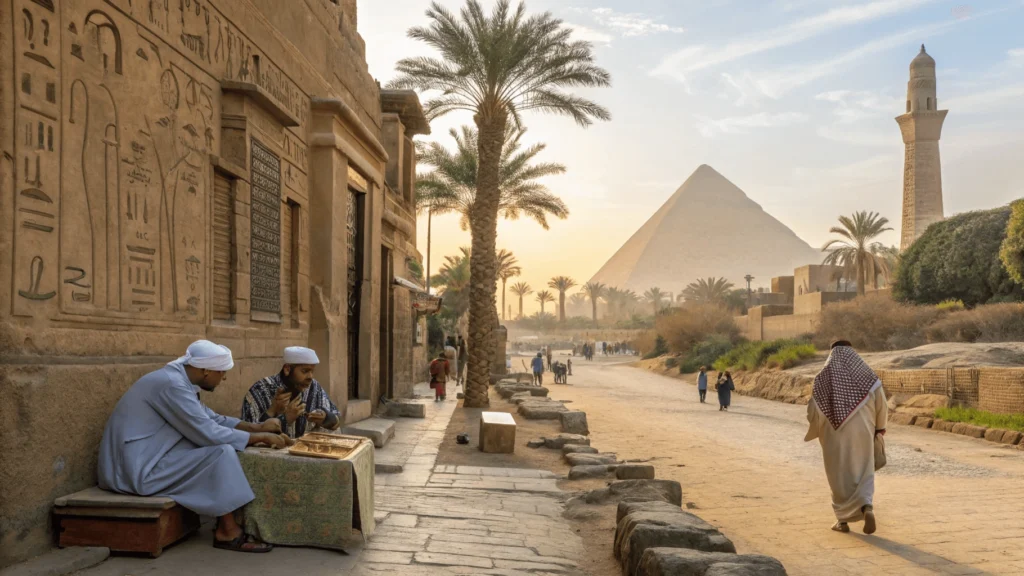
Ancient Egypt Facts
Daily Life
Diet & Cuisine:
- Bread and beer formed dietary staples
- Fish and fowl more common than red meat
- Wide variety of fruits and vegetables
- Honey used as the primary sweetener
Family Structure:
- Nuclear family as primary social unit
- Women enjoyed relatively high legal status
- Marriage typically by mutual consent
- Inheritance through both male and female lines
Education & Literacy:
- Literacy limited to about 1% of population
- Scribal training began around age 5
- Apprenticeship system for crafts and trades
- Oral tradition for transmitting knowledge
Medicine & Health:
- Combination of practical treatments and magical elements
- Specialized practitioners for different ailments
- Extensive pharmacopeia of plant-based remedies
- Surgical procedures including basic brain surgery
Social Structure
The Pharaoh:
- Divine ruler embodying gods on earth
- Chief priest, military leader, and lawgiver
- Responsible for maintaining Ma’at (cosmic order)
- Succession typically hereditary but not always father-to-son
The Elite:
- Priests (managing vast temple estates)
- Nobles (provincial administrators)
- Scribes (essential bureaucratic class)
- Military leadership
The Middle Classes:
- Craftspeople (organized in guilds)
- Merchants and traders
- Lower-level officials
- Professional soldiers
The Majority:
- Farmers (tied to agricultural cycles)
- Laborers and servants
- Seasonal construction workers
- Household staff
Slavery:
- Not racial but typically prisoners of war
- Debt slavery existed but with possible redemption
- Conditions varied widely based on household/position
- Some slaves could own property and even other slaves
Modern egypt things Snapshot
Population & Demographics
- Population: Approximately 110 million (2025)
- Urban/Rural Split: About 43% urban, 57% rural
- Major Cities: Cairo (largest), Alexandria, Giza, Shubra El-Kheima
- Age Structure: Young population with median age around 24
Language
- Official Language: Arabic (Egyptian dialect)
- English and French widely understood in tourist areas
- Coptic survives as liturgical language in Coptic Church
- Ancient Egyptian language evolved through several stages before becoming extinct as spoken language
Government & Politics
- System: Presidential republic
- Constitution: Current version adopted 2014, amended 2019
- Administrative Divisions: 27 governorates
- International Relations: Key player in Arab world and African Union
Economy
- Key Sectors: Tourism, Suez Canal revenues, agriculture, remittances
- Currency: Egyptian Pound (EGP)
- Challenges: Population growth, water security, inflation
- Development Projects: New Administrative Capital, Suez Canal expansion
Cultural Etiquette & Customs
Greetings & Interactions
- Handshakes common between same genders
- Address people with titles (Doctor, Professor, Mr., Mrs.) plus first name
- Direct eye contact shows sincerity but shouldn’t be prolonged with opposite gender
- Personal questions about family often show friendly interest rather than intrusiveness
Phrase to Use: “Ahlan wa sahlan” (Welcome) – Always met with appreciation
Dress Code
For Women:
- Conservative clothing covering shoulders and knees
- Looser rather than form-fitting attire
- Head covering necessary for mosque visits but not mandatory elsewhere
- More flexibility in upscale areas of Cairo and resort areas
For Men:
- Long pants in most settings (shorts mainly acceptable at beach resorts)
- Shirts with sleeves (short sleeves fine)
- Clean, neat appearance valued
Bargaining Practices
- Expected in markets, independent shops, and with taxis
- Not practiced in department stores or fixed-price shops
- Begin around 60-70% below asking price
- Friendly attitude essential—bargaining is social interaction
Key Phrase: “Showayyah,” meaning “a little,” suggesting the price should be lowered
Tipping (Baksheesh)
- Essential part of economic system
- Service positions rely heavily on tips
- Standard 10-15% in restaurants if service charge not included
- Small tips expected for restroom attendants, hotel staff, guides
Common Amounts:
- Hotel room cleaning: 5-10 EGP per day
- Bellhop: 5 EGP per bag
- Restaurant server: 10-15% of bill
- Tour guide: 100+ EGP per day depending on service
Food & Drink Highlights
Signature Dishes
Koshari: egypt things national dish combining rice, lentils, pasta, chickpeas, topped with tomato sauce and fried onions—a delicious vegetarian carb-fest.
Ful Medames: Stewed fava beans seasoned with olive oil, lemon juice, and spices—egypt things most common breakfast.
Molokhiya: Green soup made from jute leaves, typically served with chicken or rabbit and rice—distinctive and nutritious.
Mahshi: Vegetables (grape leaves, zucchini, bell peppers, eggplant) stuffed with spiced rice mixture—labor-intensive but delicious.
Ta’ameya (Egyptian Falafel): Made with fava beans rather than chickpeas, giving it a distinctive green interior and lighter texture than Levantine versions.
Beverages
Karkade (Hibiscus Tea): Bright red infusion served hot or cold—packed with vitamin C and antioxidants.
Shai (Black Tea): Usually served very sweet with fresh mint—the social lubricant of Egyptian life.
Sahlab: Thick, sweet hot drink made with orchid flour, milk, and topped with nuts and cinnamon—perfect winter warmer.
Sugarcane Juice: Freshly pressed on street carts—refreshing natural sugar boost.
Local Beers: Stella and Sakara—light lagers ideal for hot climate.
Dining Customs
- Bread accompanies nearly every meal
- Sharing dishes from communal plates common in traditional settings
- Eating with right hand traditional (though utensils now common)
- Meals often begin with mezze (small appetizers)
- Dinner typically served quite late (9 PM or after)
Surprising/Interesting Facts
- Ancient Egyptian doctors were so renowned that foreign rulers requested their services
- Workers on the Great Pyramid received beer rations as part of their payment
- Cleopatra was actually Greek, not Egyptian, and likely had red hair
- Ancient Egyptians invented toothpaste using eggshells, ox hooves, and pumice
- The Cairo Metro carries over 5 million passengers daily and includes women-only cars
- Egypt’s Western Desert contains the Sahara’s third-largest dune field (Great Sand Sea)
- Traditional houseboats (dahabiyas) on the Nile in Cairo featured in numerous classic novels
- An estimated 1/3 of the world’s ancient monuments are located in egypt things
- The ancient Egyptian calendar had 12 months of 30 days plus 5 extra days at year’s end
- The Lighthouse of Alexandria was the world’s first true lighthouse and one of the Seven Wonders
Practical Things for Visitors
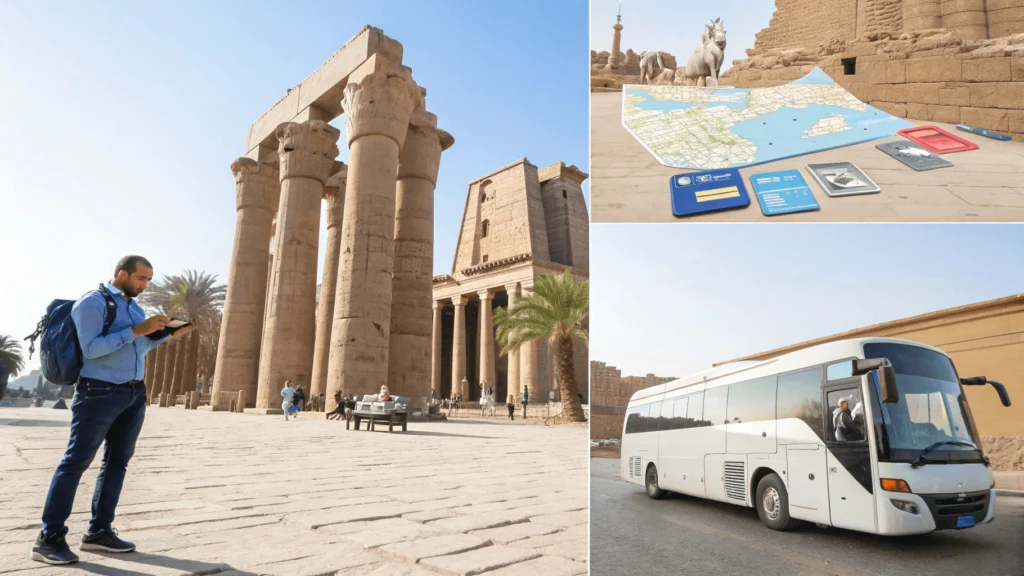
Best Time to Visit
Weather Considerations
| Season | Months | Temperature | Crowds | Notes |
|---|---|---|---|---|
| Winter | Nov-Feb | 10-24°C (50-75°F) | Peak | Ideal for sightseeing |
| Spring | Mar-May | 14-32°C (57-90°F) | Moderate | Good balance of weather/crowds |
| Summer | Jun-Aug | 23-40°C (73-104°F) | Low | Extremely hot, especially in south |
| Fall | Sep-Oct | 20-35°C (68-95°F) | Moderate | Warming but manageable |
Regional Variations:
- Mediterranean coast significantly cooler in summer
- Upper egypt things (Luxor/Aswan) can reach 45°C (113°F) in summer months
- Desert areas experience extreme temperature fluctuations between day and night
Notable Events & Festivals
Abu Simbel Sun Festival (February 22 & October 22): Witness the solar alignment illuminating the inner sanctuary.
Ramadan: Dates vary yearly (follows lunar calendar). Daytime services may be limited, but evening festivities are spectacular.
Coptic Christmas (January 7): Celebrated with special services and festivities.
Cairo International Film Festival (November): One of the Arab world’s premier cultural events.
Sham El-Nessim (April): Ancient spring festival now celebrated by all Egyptians regardless of religion.
Getting Around
Air Travel
Domestic flights connect major tourist destinations:
- Cairo to Luxor: ~1 hour flight vs. 9+ hour drive
- Cairo to Aswan: ~1.5 hour flight vs. 12+ hour drive
- Cairo to Sharm El-Sheikh: ~1 hour flight vs. 7+ hour drive
Airlines: EgyptAir and several low-cost carriers offer frequent domestic connections.
Train Services
Cairo-Alexandria Line:
- Frequent service (1-2 trains per hour)
- Journey time approximately 2.5 hours
- First and second class options
Cairo-Luxor-Aswan Line:
- Day and overnight sleeper services
- Journey time Cairo-Luxor: ~10 hours
- Modern sleeping cabins on night trains
- Advance booking essential for sleeper service
Road Transport
Intercity Buses:
- Extensive network connecting major cities
- Various comfort levels from basic to luxury
- Companies include GoBus, SuperJet, East Delta
Taxis & Ride-Sharing:
- Metered taxis in major cities (insist on meter usage)
- Uber and Careem available in Cairo, Alexandria, and tourist areas
- Fixed-price taxis common for longer journeys
Car Rental:
- Possible but challenging due to chaotic driving conditions
- International driving permit required
- Consider hiring a car with driver instead
Local Transportation
Metro (Cairo only):
- Three lines covering major areas
- Extremely affordable (5-10 EGP per ride)
- Women-only cars available
- Clean, efficient, and faster than road transport during rush hours
Microbuses:
- Unofficial minivans following set routes
- Very inexpensive but crowded
- Challenging for non-Arabic speakers
- Local experience for adventurous travelers
River Taxis:
- Motorboats operating as water taxis on the Nile
- Available in Cairo and other riverside cities
- Often faster than road transport during rush hour
- Scenic alternative to land transportation
Safety & Health Tips
General Safety
egypt things has worked hard to improve tourist safety, with dedicated tourist police and increased security at major sites.
Safety Recommendations:
- Register with your embassy upon arrival
- Avoid political demonstrations or large gatherings
- Use hotel safes for valuables and important documents
- Stick to well-traveled areas, especially at night
- Women should consider group tours rather than solo exploration in some areas
Common Scams:
- “Free” guides who demand payment later
- “Special” entrance to sites that doesn’t exist
- Taxi meters that run too fast
- Claims that sites are closed to redirect you to shops
Prevention: Arrange guides through hotels or reputable agencies, confirm opening hours independently.
Health Considerations
Before Travel:
- No mandatory vaccinations, but hepatitis A, typhoid recommended
- Consider comprehensive travel insurance with evacuation coverage
- Pack basic first aid supplies and regular medications
During Visit:
- Drink only bottled water (check seal is intact)
- Avoid raw vegetables, unpeeled fruits, and street ice
- Use high SPF sunscreen and stay hydrated
- Seek medical help at private hospitals in major cities when needed
Common Issues:
- “Pharaoh’s Revenge” (traveler’s diarrhea)
- Heat exhaustion/sunstroke
- Minor respiratory irritation from dust/pollution
Treatment Resources: International medical centers available in major cities with English-speaking staff.
Visa Information
Tourist Visa Types
| Visa Type | Duration | Cost | Notes |
|---|---|---|---|
| Single Entry | 30 days | $25 USD | Most common tourist visa |
| Multiple Entry | 90 days | $60 USD | Good for regional travel |
| e-Visa | 30/90 days | $25/$60 USD | Apply online before travel |
Application Methods:
- Online e-Visa (recommended): Apply through official portal 7+ days before travel
- On arrival: Available at major entry ports for many nationalities
- Embassy/Consulate: Traditional application process
Required Documents:
- Passport valid for at least 6 months beyond arrival
- Return/onward ticket
- Proof of accommodation
- Sufficient funds for stay
Special Cases: Some border areas and remote desert regions require additional permits—arrange through tour operators.
Basic Budgeting Ideas
Accommodation Costs
| Level | Price Range (USD) | What to Expect |
|---|---|---|
| Budget | $15-40 | Simple hotels, hostels, basic amenities |
| Mid-range | $40-120 | 3-4 star hotels, good locations, pool facilities |
| Luxury | $120-500+ | 5-star hotels, resorts, premium locations |
Money-Saving Tips:
- Prices lower in summer (but weather challenging)
- Negotiable rates for stays of 3+ nights
- Airbnb and vacation rentals offer good value in cities
Food & Dining
| Option | Cost per meal (USD) | Examples |
|---|---|---|
| Street Food | $1-3 | Koshari, falafel sandwiches, fuul |
| Local Restaurants | $5-15 | Full meals at non-tourist establishments |
| Tourist Restaurants | $15-30 | International menus, Nile views |
| Luxury Dining | $30-100+ | 5-star hotels, specialty restaurants |
Budget Stretching:
- Breakfast often included with accommodation
- Lunch as main meal (dinner typically lighter)
- Water/soft drinks from supermarkets rather than restaurants
Entrance Fees & Tours
Major Sites Entry Fees:
- Pyramids & Sphinx complex: 240 EGP (~$8 USD) + additional for pyramid interiors
- Valley of the Kings: 240 EGP (~$8 USD) basic ticket (3 tombs)
- Karnak Temple: 200 EGP (~$6.50 USD)
- Egyptian Museum: 200 EGP (~$6.50 USD)
Money-Saving Options:
- Student ID cards offer 50% discount at most sites
- Combined tickets available for some related sites
- Cairo Pass: $100 USD for 5-day access to all Cairo/Giza sites
- Luxor Pass: $100-200 USD for access to all Luxor sites
Guided Tours:
- Group day tours: $40-100 USD per person
- Private guide: $80-150 USD per day
- Multi-day packages: Significant savings over independent travel
Sample Daily Budgets
Backpacker: $30-50 USD
- Hostel dormitory or budget hotel
- Street food and local restaurants
- Public transportation
- Selective choice of sites
Mid-range: $100-200 USD
- 3-star hotel or Airbnb
- Mix of local and tourist restaurants
- Occasional taxis, some guided tours
- Most major sites
Luxury: $250+ USD
- 4-5 star accommodations
- Fine dining options
- Private transportation/guides
- All desired sites plus special experiences
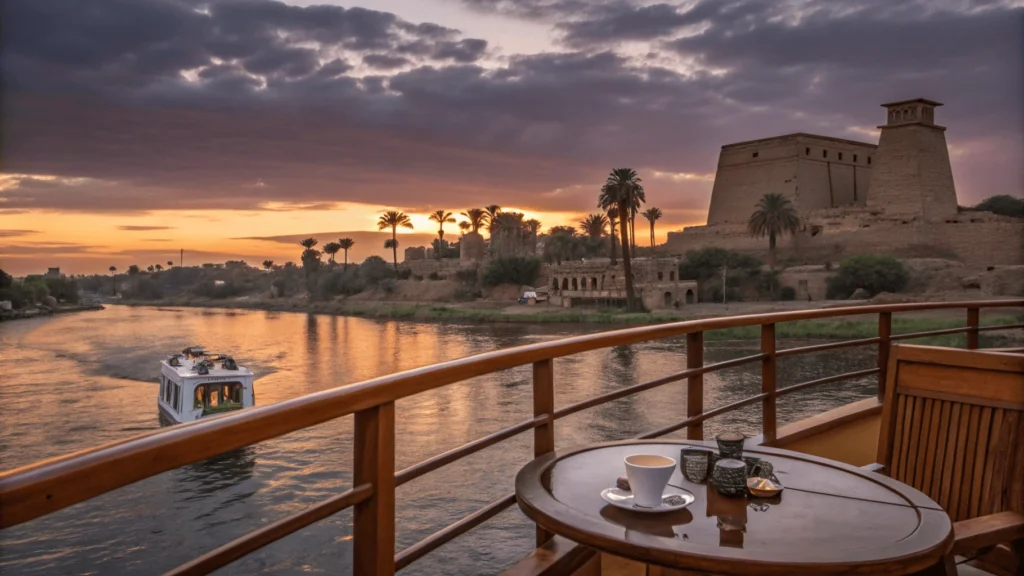
Conclusion
egypt things things encompass far more than a simple travel checklist—they represent the accumulated wisdom, artistry, and innovation of one of humanity’s most enduring civilizations. From the monumental achievements of ancient architects to the warm hospitality of modern Egyptians, this extraordinary country offers experiences that resonate on multiple levels.
Whether you’re drawn by the enigmatic Sphinx, the bustling energy of Cairo’s markets, the tranquil beauty of a Nile sunset, or the underwater wonders of the Red Sea, Egypt rewards visitors with memories that last a lifetime. The connection between past and present feels uniquely tangible here—where ancient temples still stand alongside mosques and churches, where traditional farming methods continue in the shadow of the pyramids, and where the rhythm of daily life still follows the eternal flow of the Nile.
As you plan your exploration of Egypt things, remember that this guide merely scratches the surface of this complex and fascinating destination. Each visit reveals new layers of understanding, and many travelers find themselves returning again and again, drawn back by both the grandeur of ancient monuments and the genuine warmth of Egyptian hospitality.
Explore Further
Have questions about specific aspects of egypt things? Planning a trip and looking for personalized recommendations? Leave a comment below with your questions, and we’ll help you navigate the wonderful world of Egypt things!
For more detailed information on specific destinations, check out our related guides:
- Top 10 Hidden Gems in Cairo
- Luxor: Beyond the Typical Tourist Trail
- Red Sea Diving: A Complete Guide
- Ancient Egyptian Gods and Mythology Explained
- Egyptian Cuisine: Recipes and Culinary History
Last updated: April 2025

